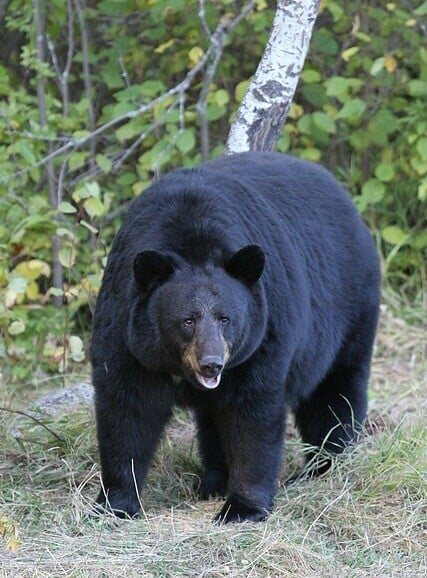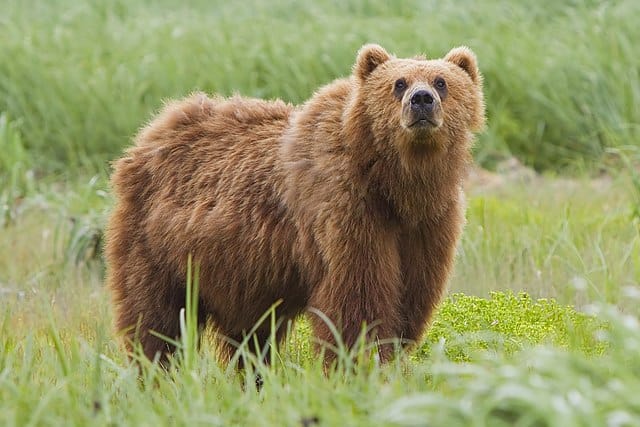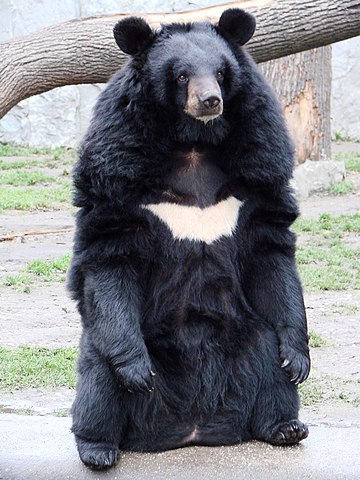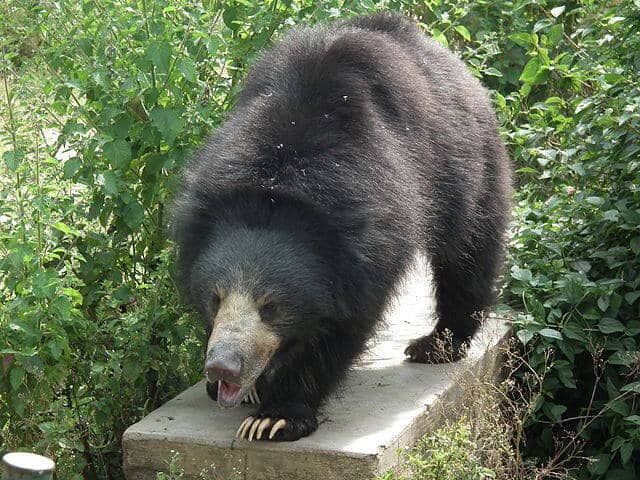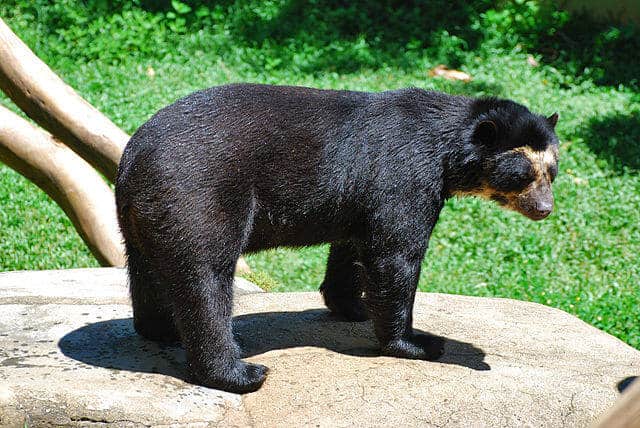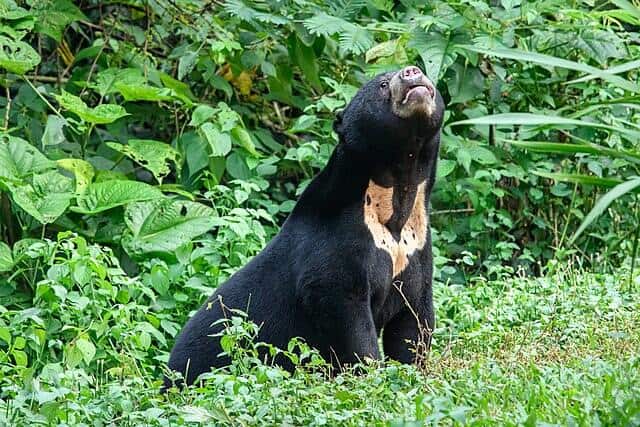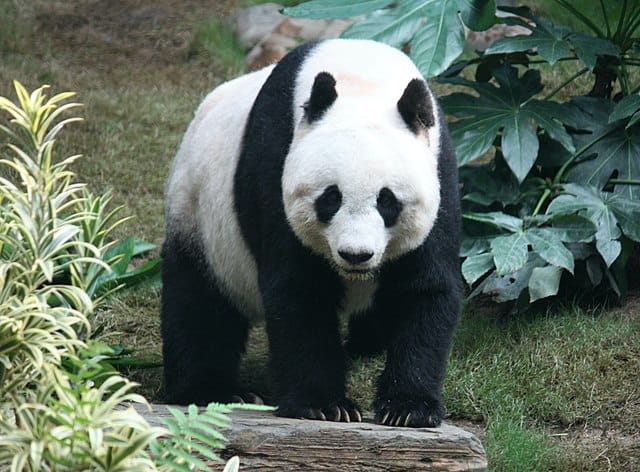Bears have been existing for millions of years. These furry animals constitute an important part of our ecosystem. Bears can be found all across the northern hemisphere and in parts of the southern hemisphere. They live in North America, South America, Asia, and Europe. In Africa, bears have become extinct.
Eight species and several sub-species of bears exist today. The International Union for Conservation of Nature (IUCN) lists six of the eight species as endangered or vulnerable. While two other species are classified as Least Concern, different subspecies are threatened with extinction.
Several conservation initiatives have been taken by the government and non-governmental organizations across the globe. Some of them have been able to achieve a certain level of success. However, it is high time that we take the matter of bear conservation seriously before they disappear.
Here we rank the eight bear species according to their rarity.
8. American Black Bear
Conservation status: Least Concern
Region: North America
Scientific name: Ursus americanus
Diet: Omnivore

photo source: wikipedia.org
The polar bear is the only bear species that is hyper-carnivorous. Polar bears share the same ancestry as Brown bears, but they have evolved different body characteristics suitable for the cold weather.
Polar bears can be found in the Arctic circle and the surrounding land mass. So far, 19 discreet subpopulations of polar bears have been recognized by scientists. The exact population size of this species is difficult to measure; it is estimated that around 22,000- 31,000 polar bears exist worldwide.
The population is mainly spread over the five nations: Norway, Greenland, Russia, the United States, and Canada. These five nations have signed the International Agreement on the Conservation of Polar Bears for greater cooperation in conservation efforts.
Climate change is one of the greatest threats faced by this majestic species. However, consistent conservation efforts have shown positive results. A survey conducted in 2017 showed among the 19 subpopulations, only one was on the decline, seven were stable, and two were increasing. Enough data was not available for the rest nine subpopulations.
Did you know?
The polar bear is the only living marine mammal that has strong and large limbs for walking and running miles on the ground.
7. Brown Bear
Conservation status: Least Concern
Region: North America and Northern Eurasia
Scientific name: Ursus arctos
Diet: Omnivore

photo source: wikipedia.org
Brown bear is the most widespread bear species with a large geographic distribution. They can be found in Russia, China, Central Asia, parts of the United States, Canada, Scandinavia, Romania, Anatolia, and the Caucasus.
The current population size for this species is estimated at around 110,000 (as of 2017). Despite the Brown bear being classified as Least Concern in the IUCN Red List of Threatened Species, many of its subspecies are critically endangered.
One such example is the Himalayan brown bear found in India, Pakistan, Afghanistan, China, and Nepal. Currently, this subspecies occupies only 2% of its former range.
The Gobi bear is another subspecies that is critically endangered. A 2022 survey documented the existence of only 51 individuals from this subspecies.
Did you know?
Brown beer is often considered the largest carnivore in the world, a title also shared by its sister species, the Polar bear. The length of a mature male can reach up to 10 feet.
6. Asiatic Black Bear
Conservation status: Vulnerable
Region: Southern Asia
Scientific name: Ursus thibetanus
Diet: Omnivore

photo source: wikipedia.org
Asiatic black bears, also known as Moon bears, live in forested hills and mountains. They are native to the Himalayas, China, the Northern Indian subcontinent, South-east Iran, the Korean Peninsula, and parts of Russia, Japan, and Taiwan.
IUCN estimates the population of Asiatic black bears to be fewer than 60,000. The animal is abundantly found in China. They can live up to 25 years in the wild and up to 39 years in captivity.
Asiatic black bears are medium in size, and their body is covered with black fur. They have a distinct white mark on their chest that usually looks like a V.
They are the most bipedal among all the bear species and can walk for over a quarter of a mile on two legs.
Did you know?
Before hunting was banned in the 1980s, Asiatic black bears were killed in numbers for their bile. The bile used to be collected by some traditional Asian medicine practitioners who believed it had medical properties. After the imposition of the ban, these bears are farmed for their bile. It is called bile farming, and these captivated bears are called battery bears or bile bears.
5. Polar Bear
Conservation status: Vulnerable
Region: Arctic circle
Scientific name: Ursus maritimus
Diet: Carnivore

photo source: wikipedia.org
The polar bear is the only bear species that is hyper-carnivorous. Polar bears share the same ancestry as Brown bears, but they have evolved different body characteristics suitable for the cold weather.
Polar bears can be found in the Arctic circle and the surrounding land mass. So far, 19 discreet subpopulations of polar bears have been recognized by scientists. The exact population size of this species is difficult to measure; it is estimated that around 22,000- 31,000 polar bears exist worldwide.
The population is mainly spread over the five nations: Norway, Greenland, Russia, the United States, and Canada. These five nations have signed the International Agreement on the Conservation of Polar Bears for greater cooperation in conservation efforts.
Climate change is one of the greatest threats faced by this majestic species. However, consistent conservation efforts have shown positive results. A survey conducted in 2017 showed among the 19 subpopulations, only one was on the decline, seven were stable, and two were increasing. Enough data was not available for the rest nine subpopulations.
Did you know?
The polar bear is the only living marine mammal that has strong and large limbs for walking and running miles on the ground.
4. Sloth Bear
Conservation status: Vulnerable
Region: Indian subcontinent
Scientific name: Melursus ursinus
Diet: Omnivore

photo source: wikipedia.org
Sloth bears are native to India, Nepal, Sri Lanka, and Bhutan. In Bangladesh, this bear species is regionally extinct. The population size in India and Sri Lanka is estimated to be fewer than 20,000.
The population of Sloth bears is on the decline due to habitat loss combined with poaching. Besides, Sloth bears had been captured in India for roadside shows for a long period of time before it was banned.
Sloth bears are slow and clumsy. They also have poor senses of sight and hearing. Adult sloth bears do not have top front teeth. It allows them to suck up insects and termites without difficulties. Besides, they can completely close their nostrils so that insects and dust cannot go in while attacking beehives or termite nests.
Did you know?
Sloth bears carry their children on their backs, a habit not exhibited by any other bear species.
3. Spectacled Bear
Conservation status: Vulnerable
Region: South America
Scientific name: Tremarctos ornatus
Diet: Mostly herbivore

photo source: wikipedia.org
The spectacled bear is native to the Andes mountain region in South America. Thus, this bear is also referred to as the Andean bear, mountain bear, or Andean short-faced bear.
The spectacled bear is the only short-faced bear species that still exist. These bears have black fur with a reddish-brown tinge on them. Besides, they typically feature light patches on their chest, neck, and surrounding their eyes. In some individuals, this light coloring may look like a spectacle, hence the name.
Spectacle bears mostly feed on plants but occasionally can engage in carnivory. The population size for the Spectacled bear is estimated to be around 10,000. It excludes the population living in Peru, Bolivia, and Northern Argentina.
Loss and fragmentation of habitat are the main threats faced by this bear species. Poaching is another major cause of population reduction of Spectacled bears.
Did you know?
The front legs of Spectacled bears are longer than their rear legs. It makes them excellent climbers.
2. Sun Bear
Conservation status: Vulnerable
Region: Southeast Asia
Scientific name: Ursus malayanus
Diet: Omnivore

photo source: wikipedia.org
Sun bear is the smallest bear species that grows up to 4 feet. They get the name from the orange-yellow patch on their chest.
Sun bears live in the South Asian tropical forest spread across India, China, Bangladesh, Indonesia, Malaysia, Laos, Cambodia, Vietnam, Thailand, and Myanmar.
It was once widespread in the lowland forests in this entire region. However, the population has declined by 35% during the last three decades. The exact population numbers are not available, but it is estimated to be fewer than 2000 individuals in the wild.
Did you know?
Sun bear has a long tongue that can be up to 9.5 inches. It enables them to extract honey and insects from the beehives and nests.
1. Giant Panda
Conservation status: Vulnerable
Region: China
Scientific name: Ailuropoda melanoleuca
Diet: Folivore

photo source: wikipedia.org
The giant Panda is the rarest bear in the world. It is endemic to China. Giant Panda was once classified as endangered on IUCN red list. However, consistent efforts have been successful in increasing the population.
A March 2015 report estimates the total population of Giant Panda in the wild to be 1,864. In 2016, IUCN reclassified it as vulnerable. In 2021, the reclassification was also done by the Chinese government.
However, the existence of this rare bear species is still threatened by continuous habitat loss and habitat fragmentation. Another key factor that contributes to the issue of a declining population is the low birth rate both in the wild and in captivity.
Did you know?
Giant pandas feed only on bamboo, and that makes them the only herbivorous bear species.

